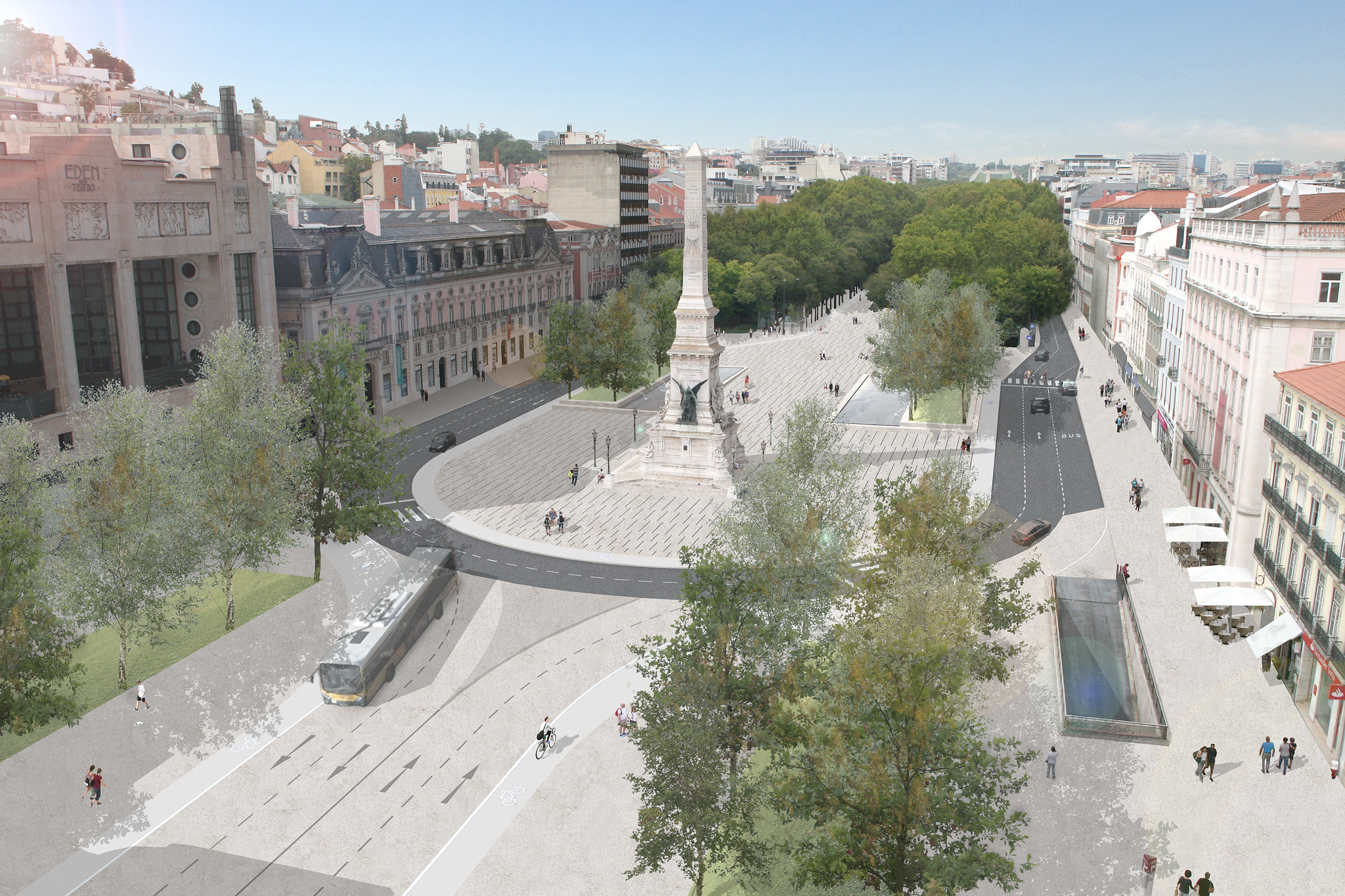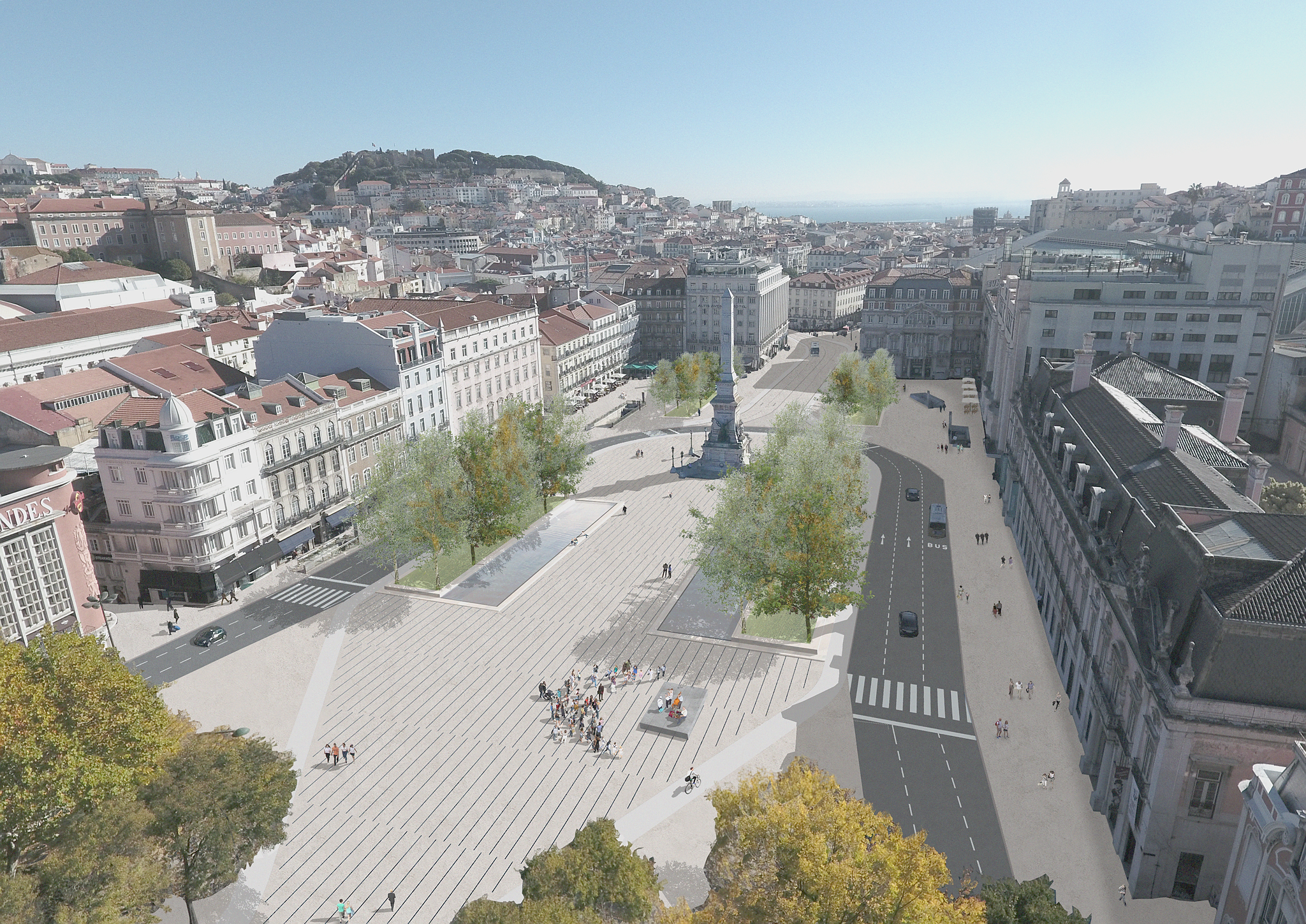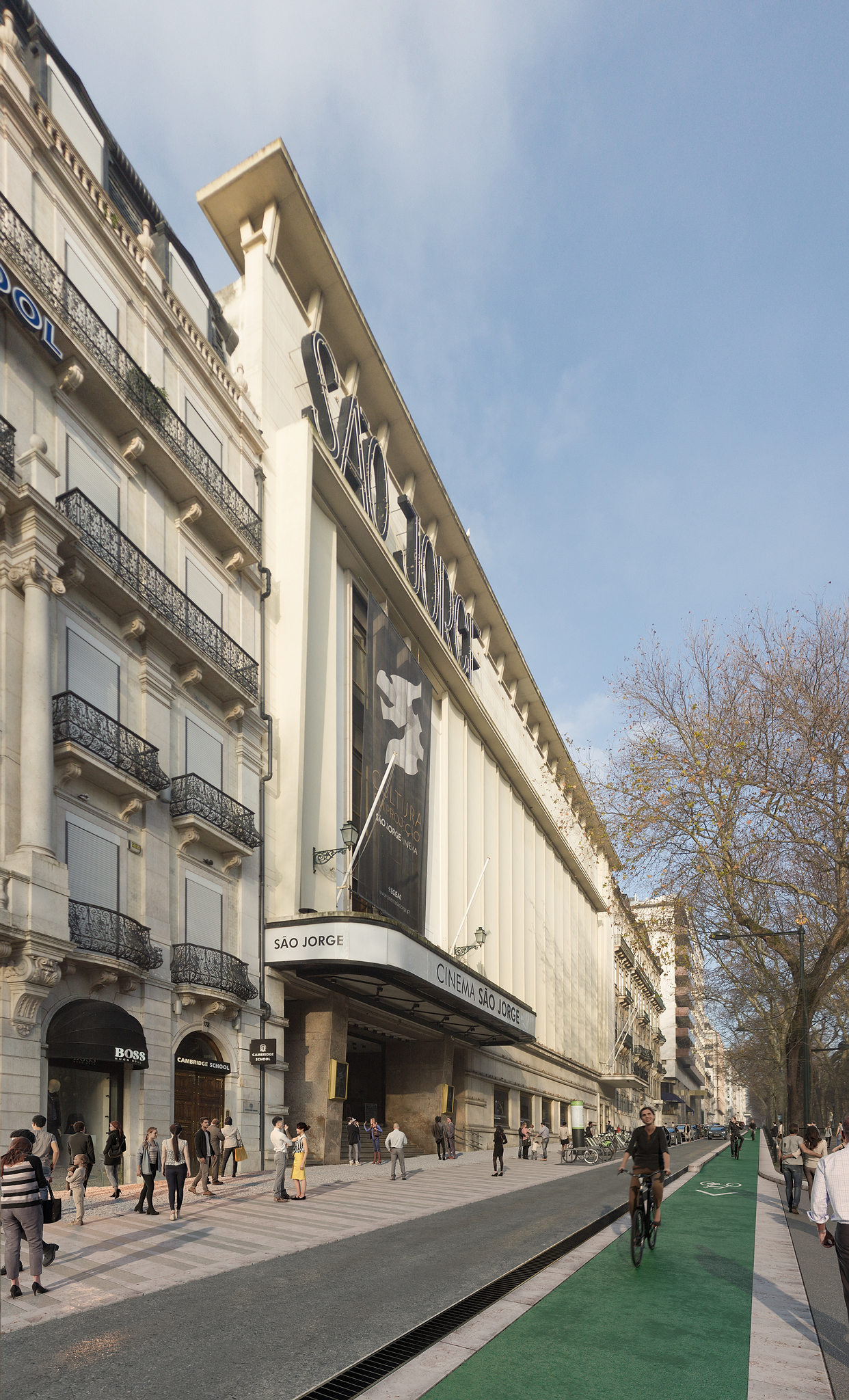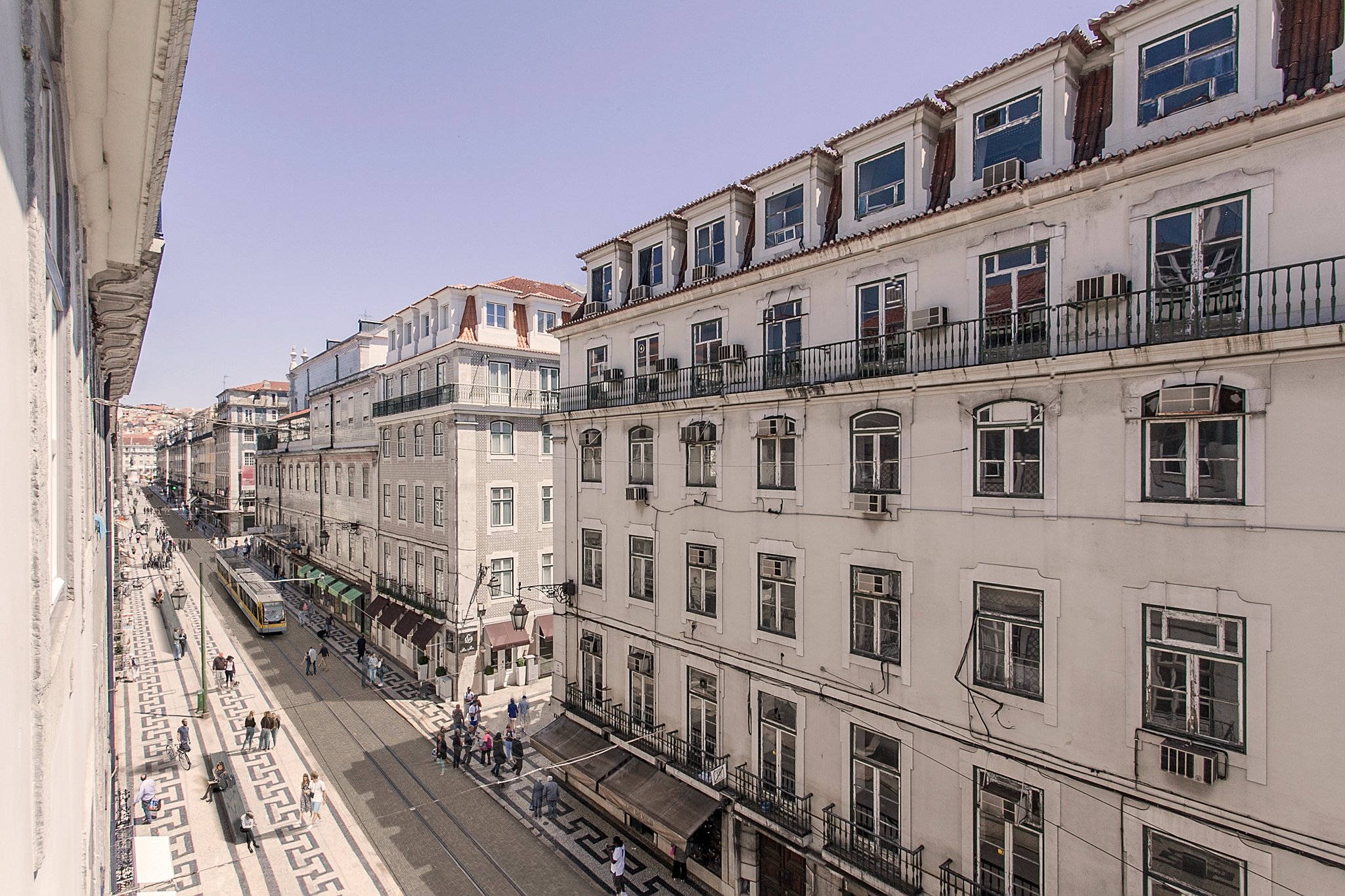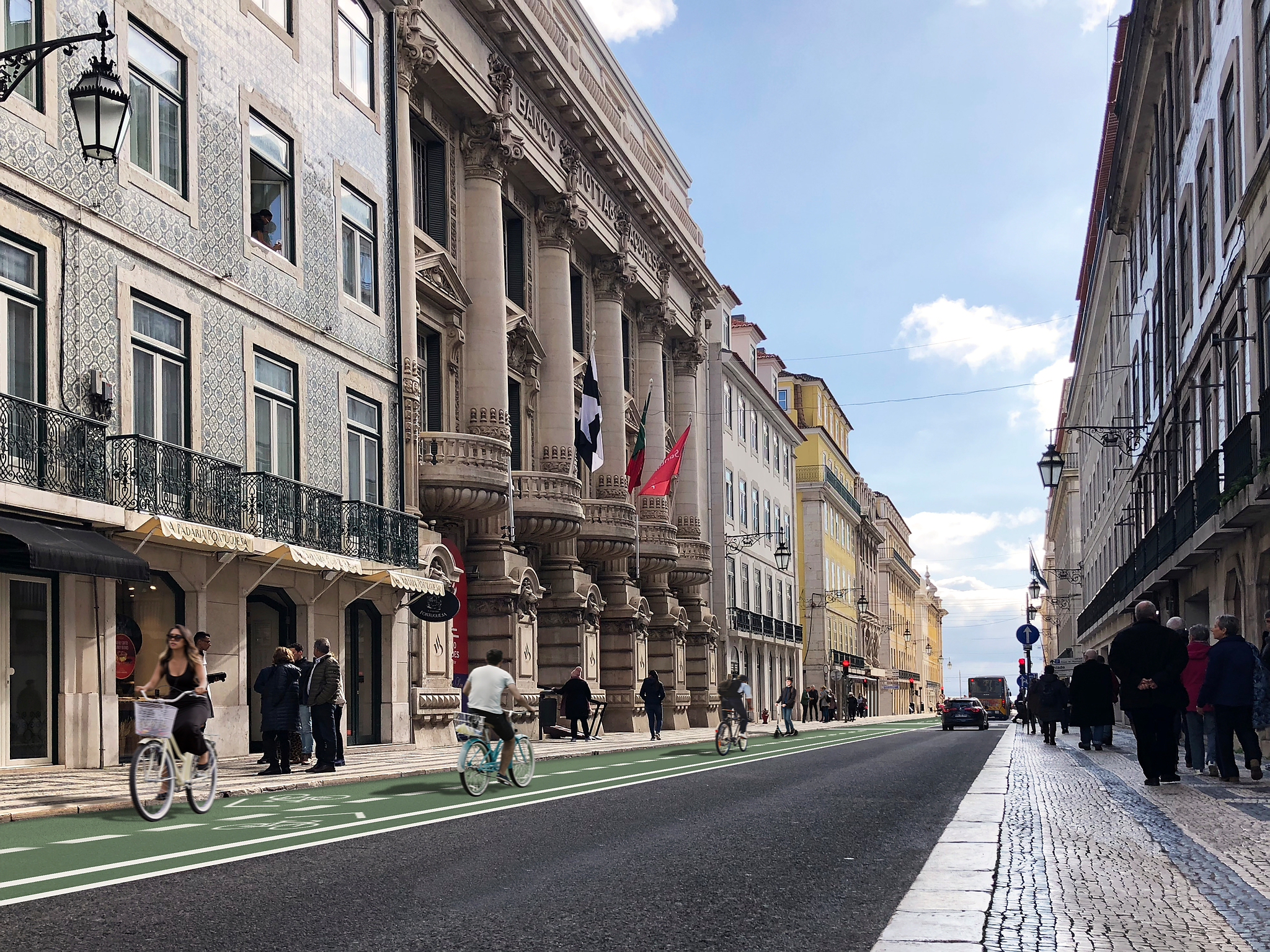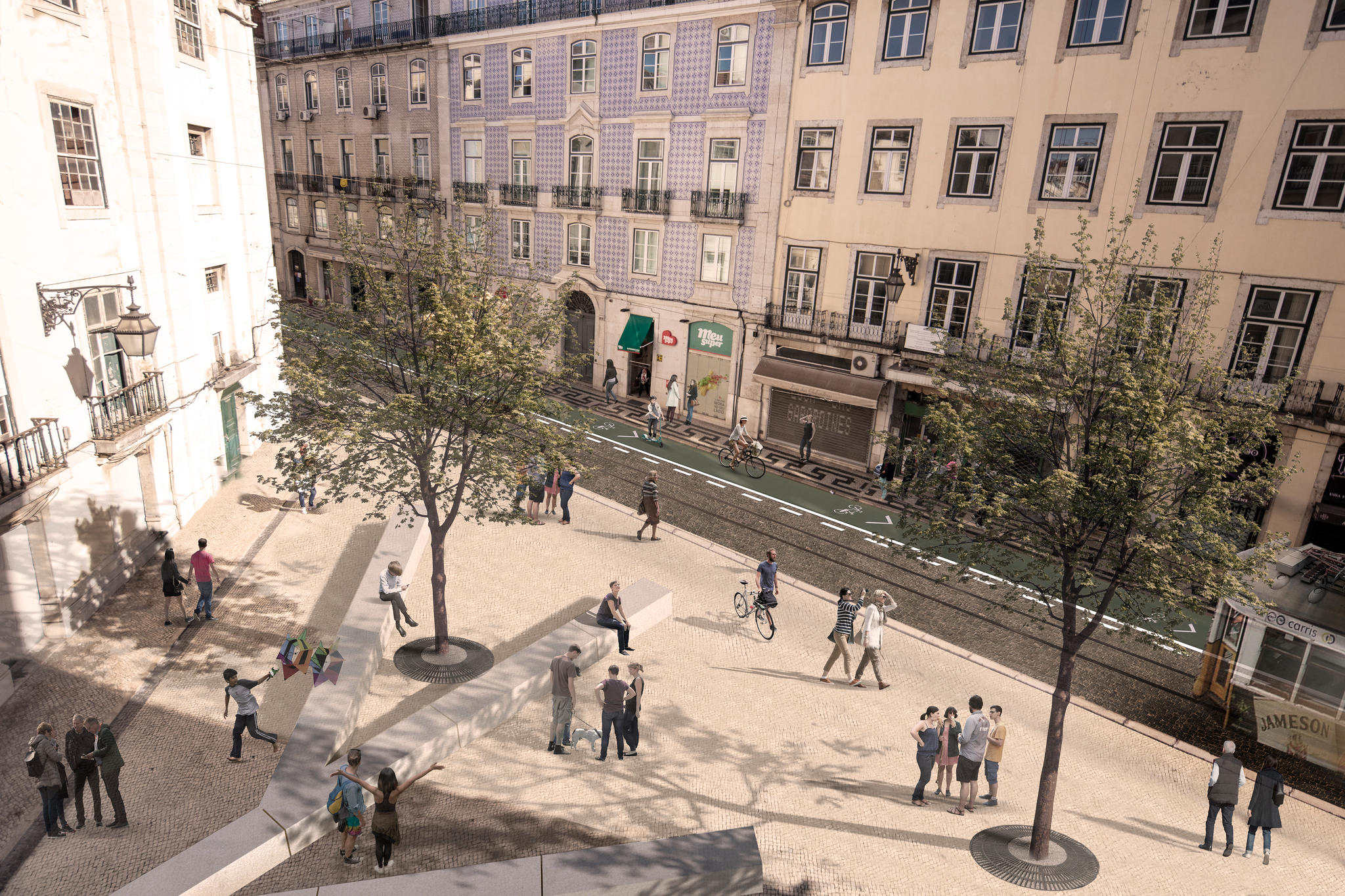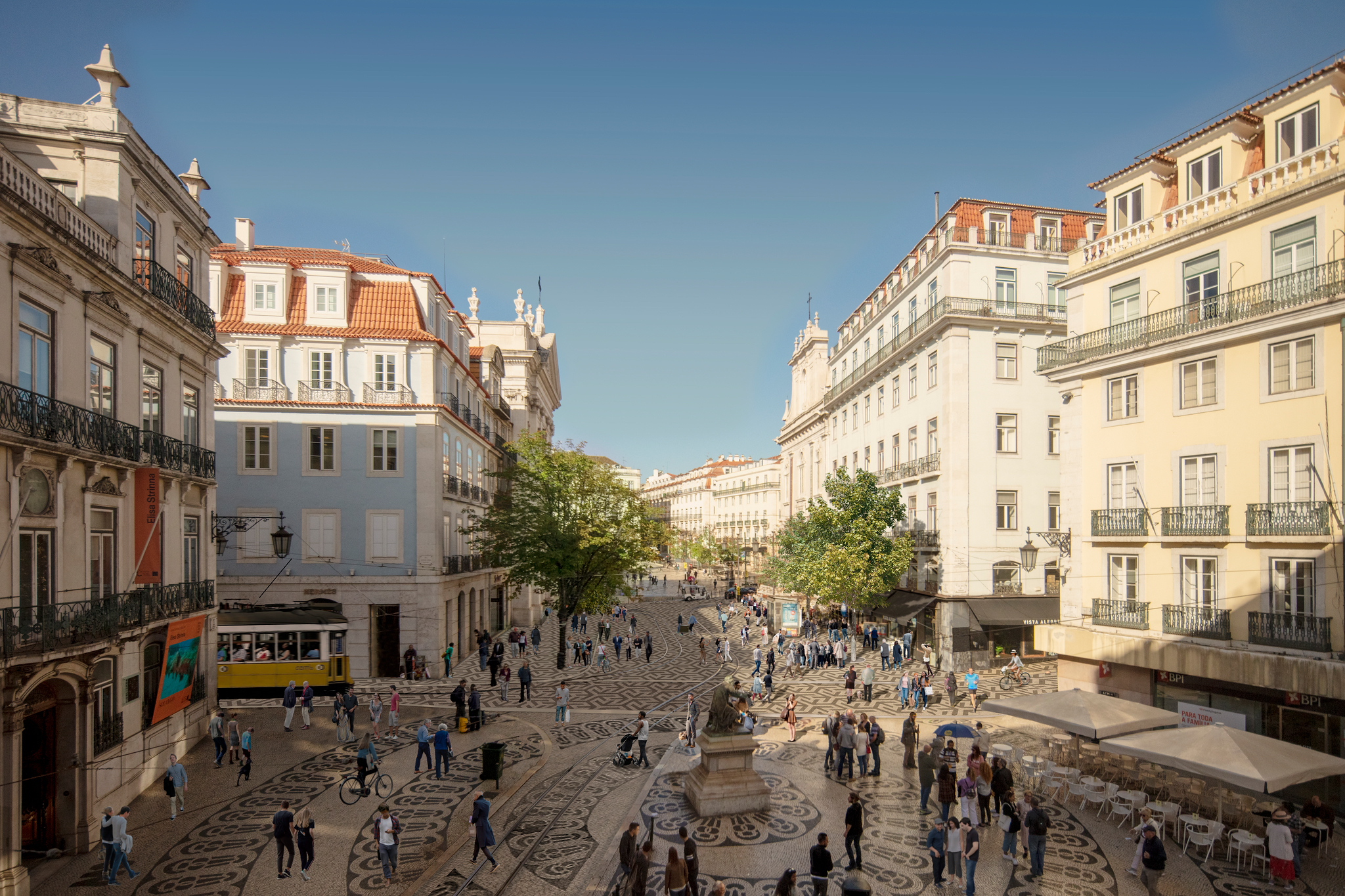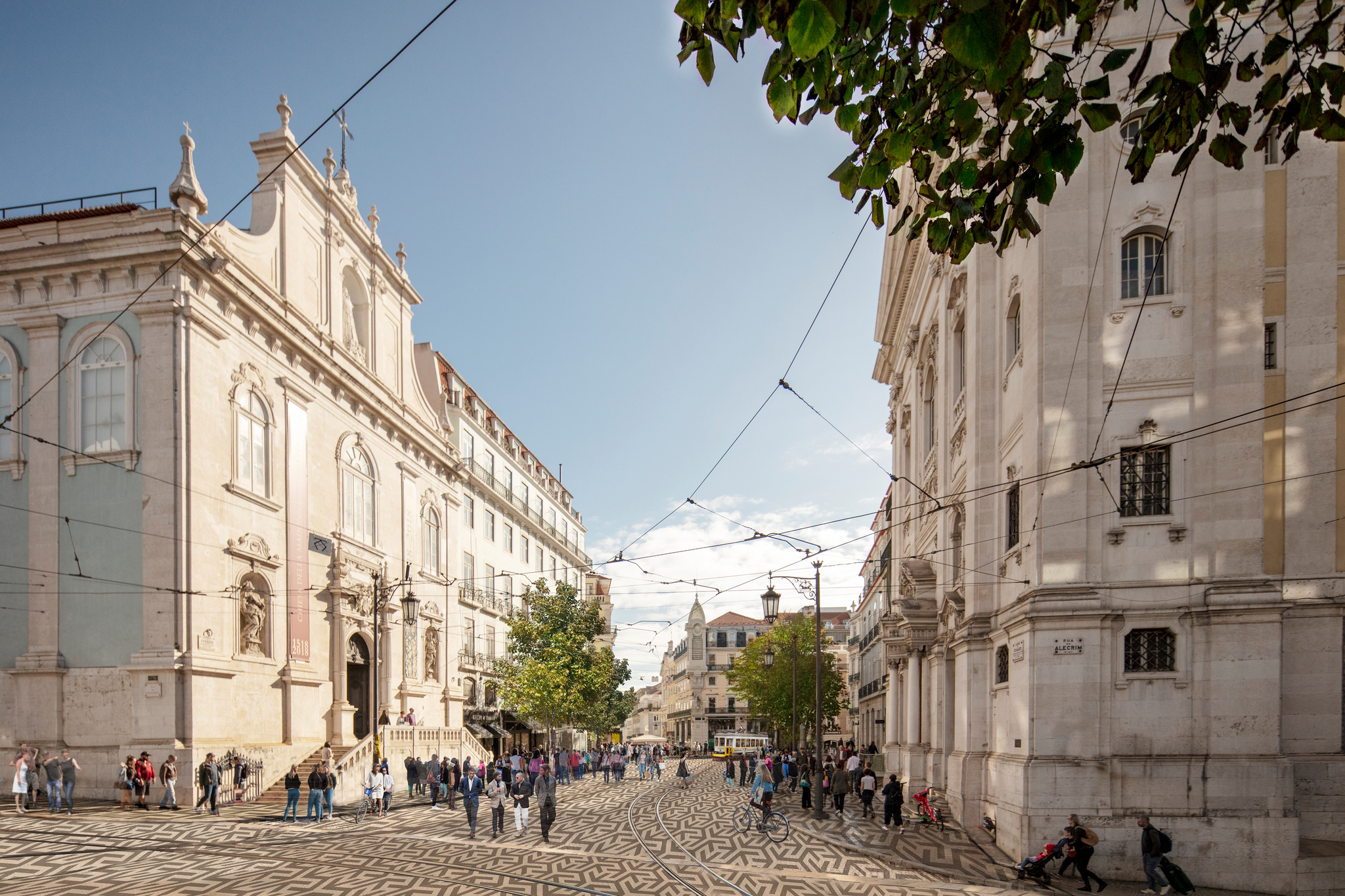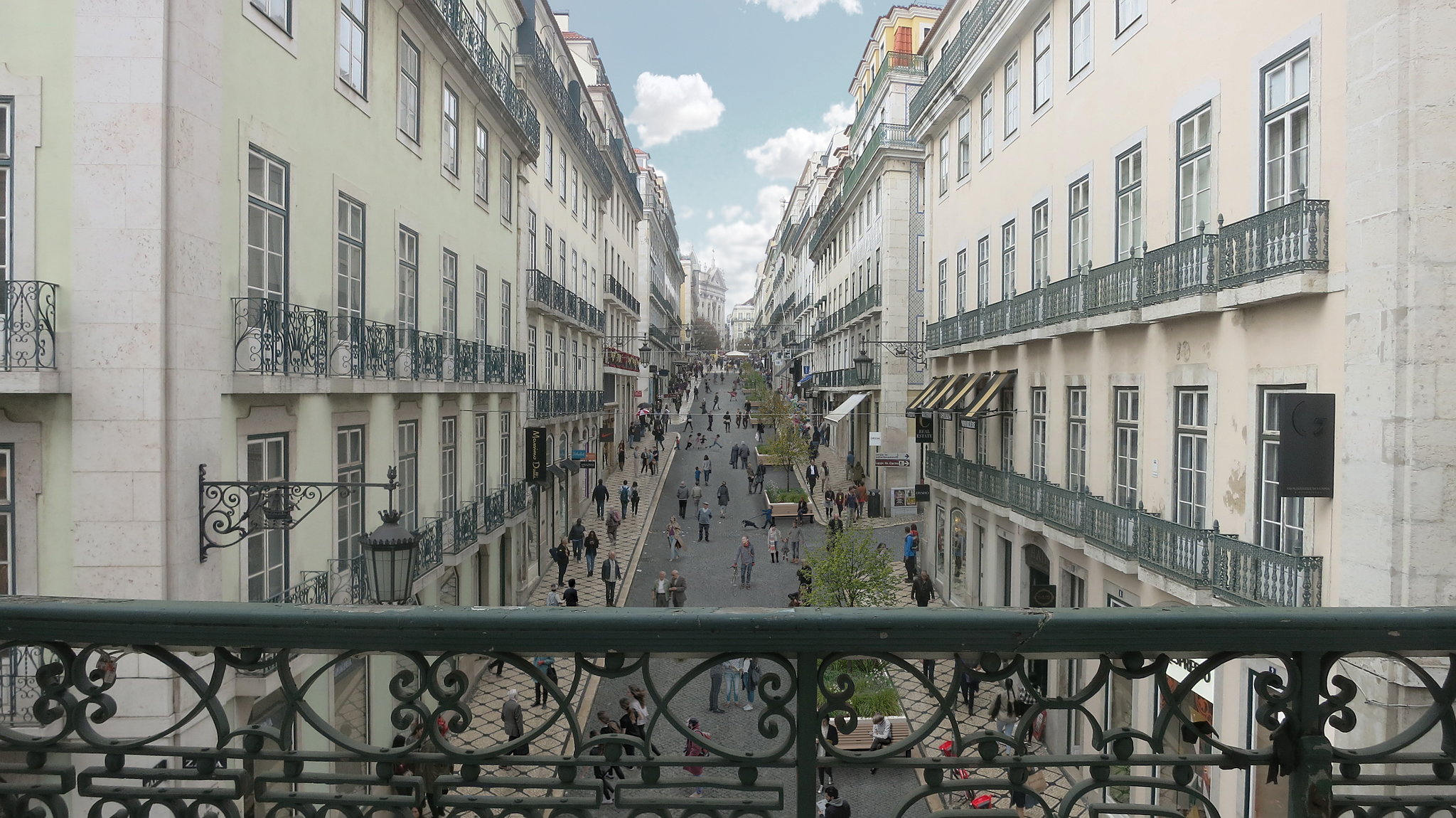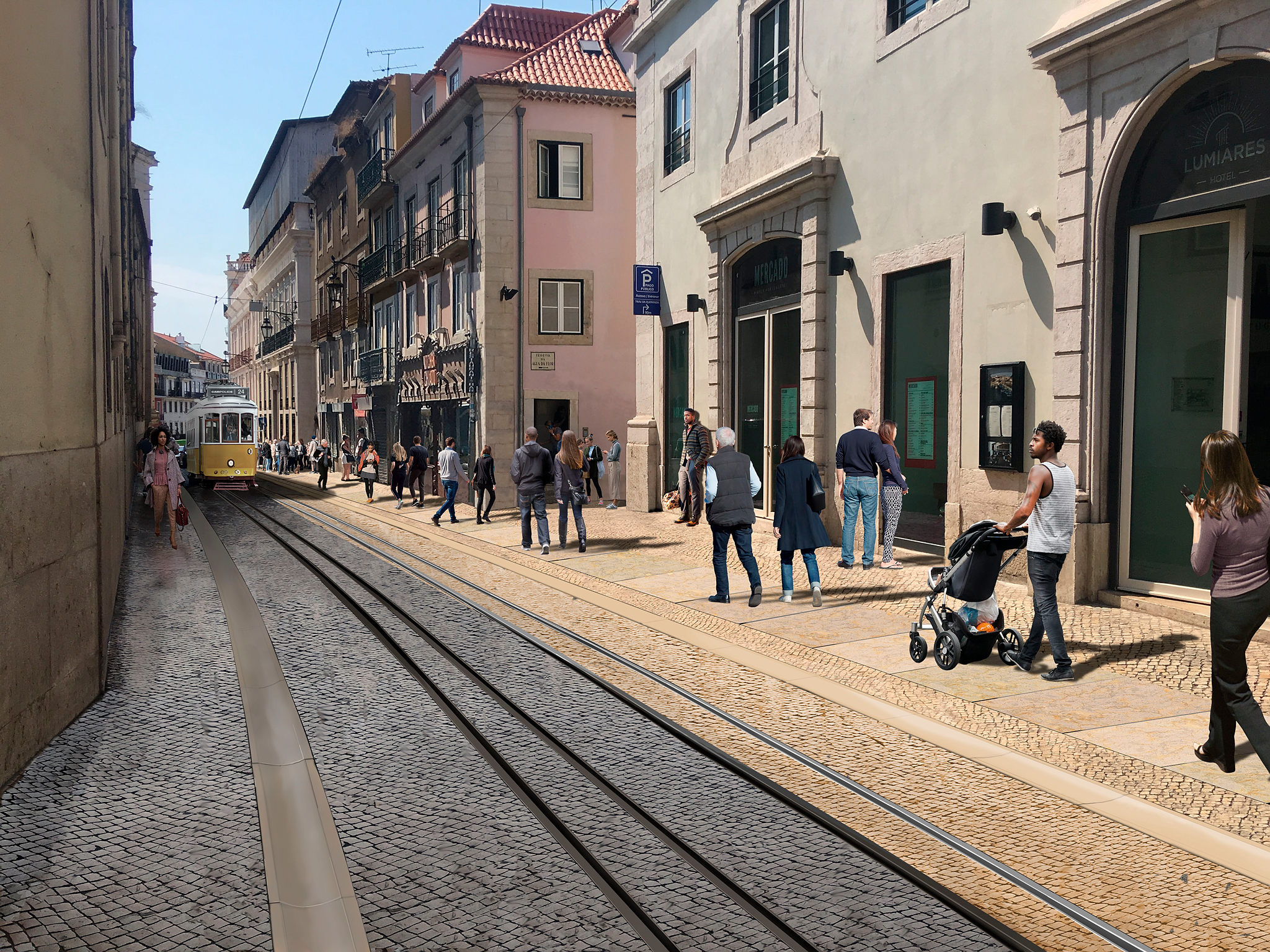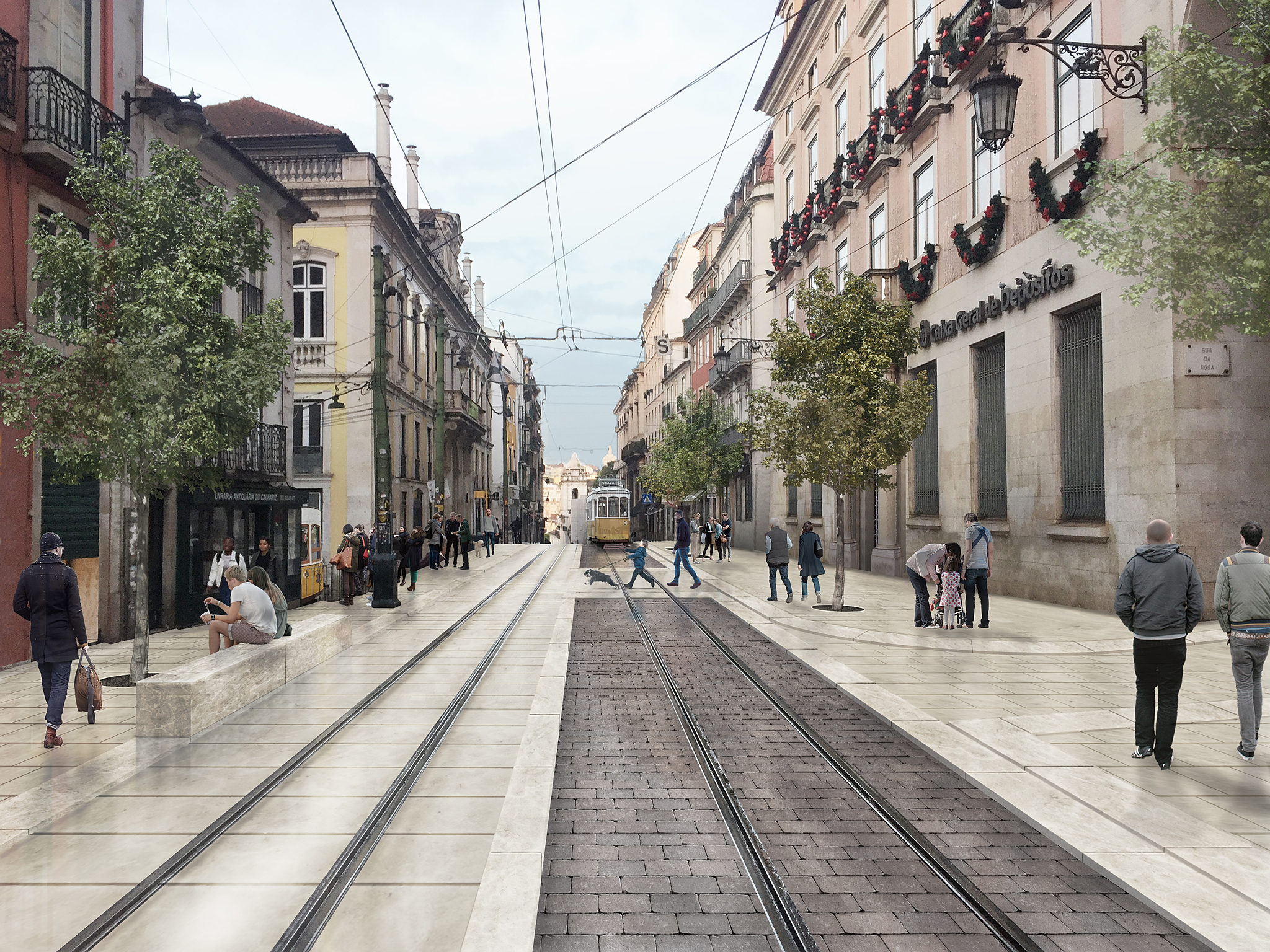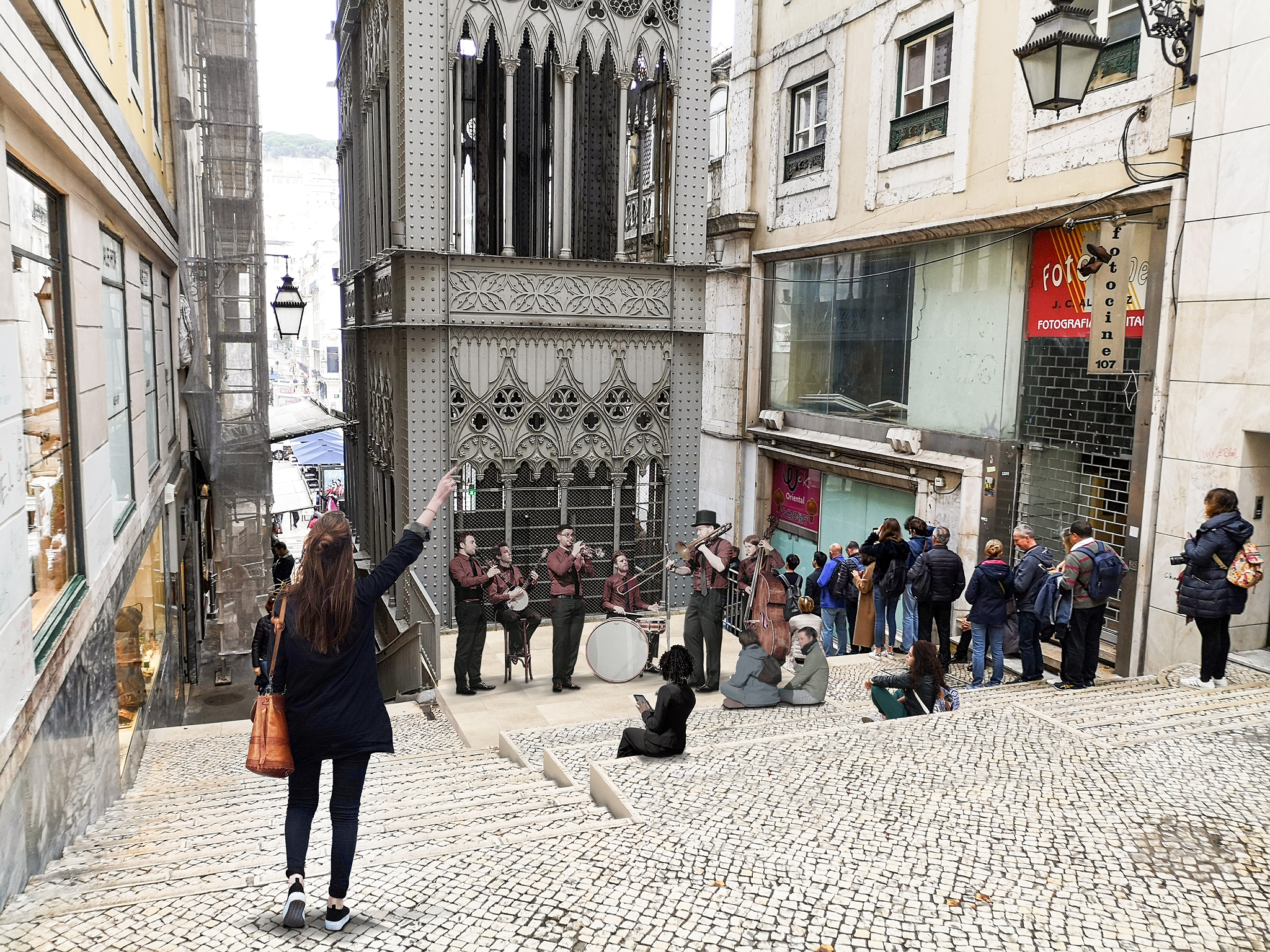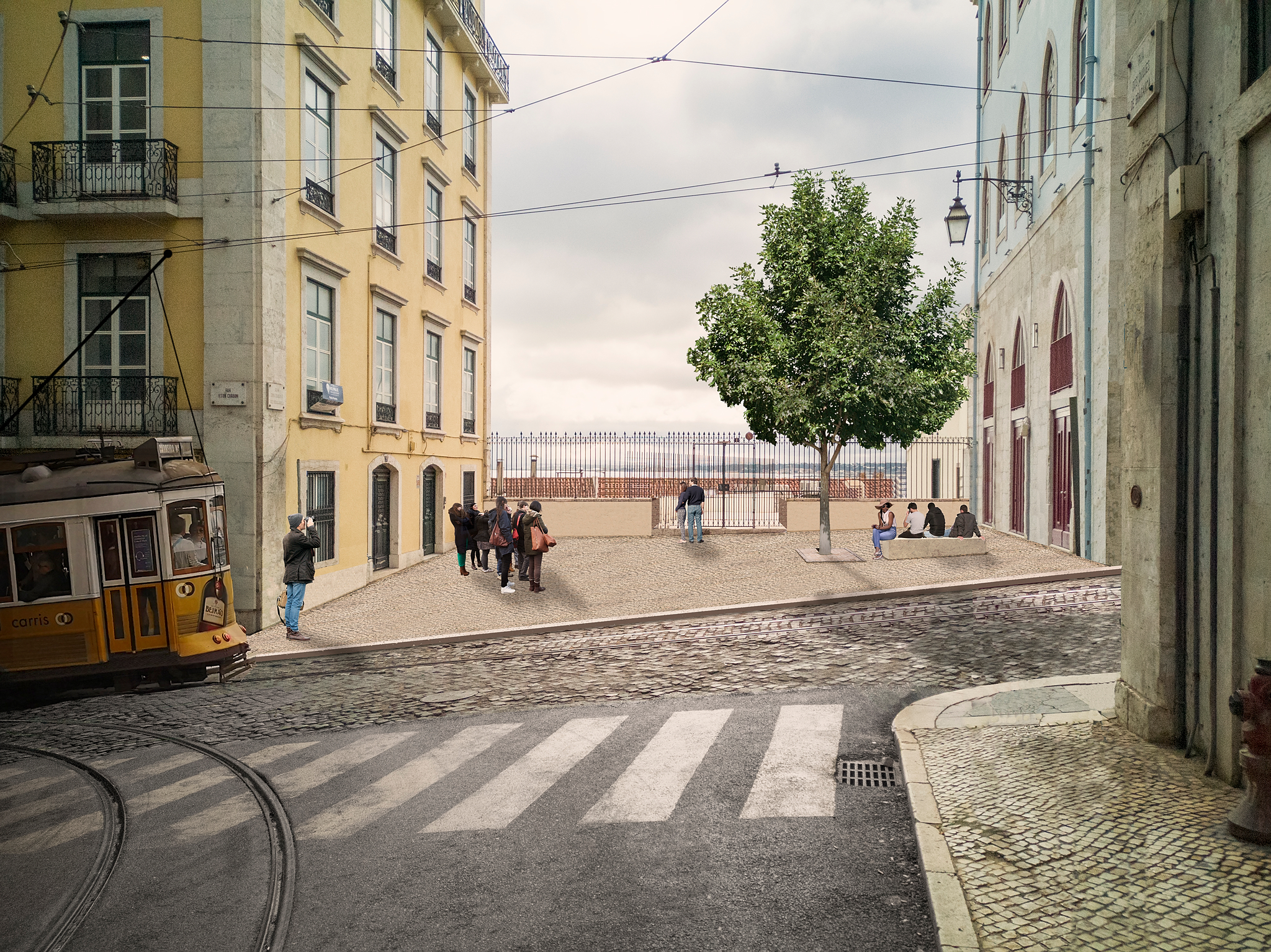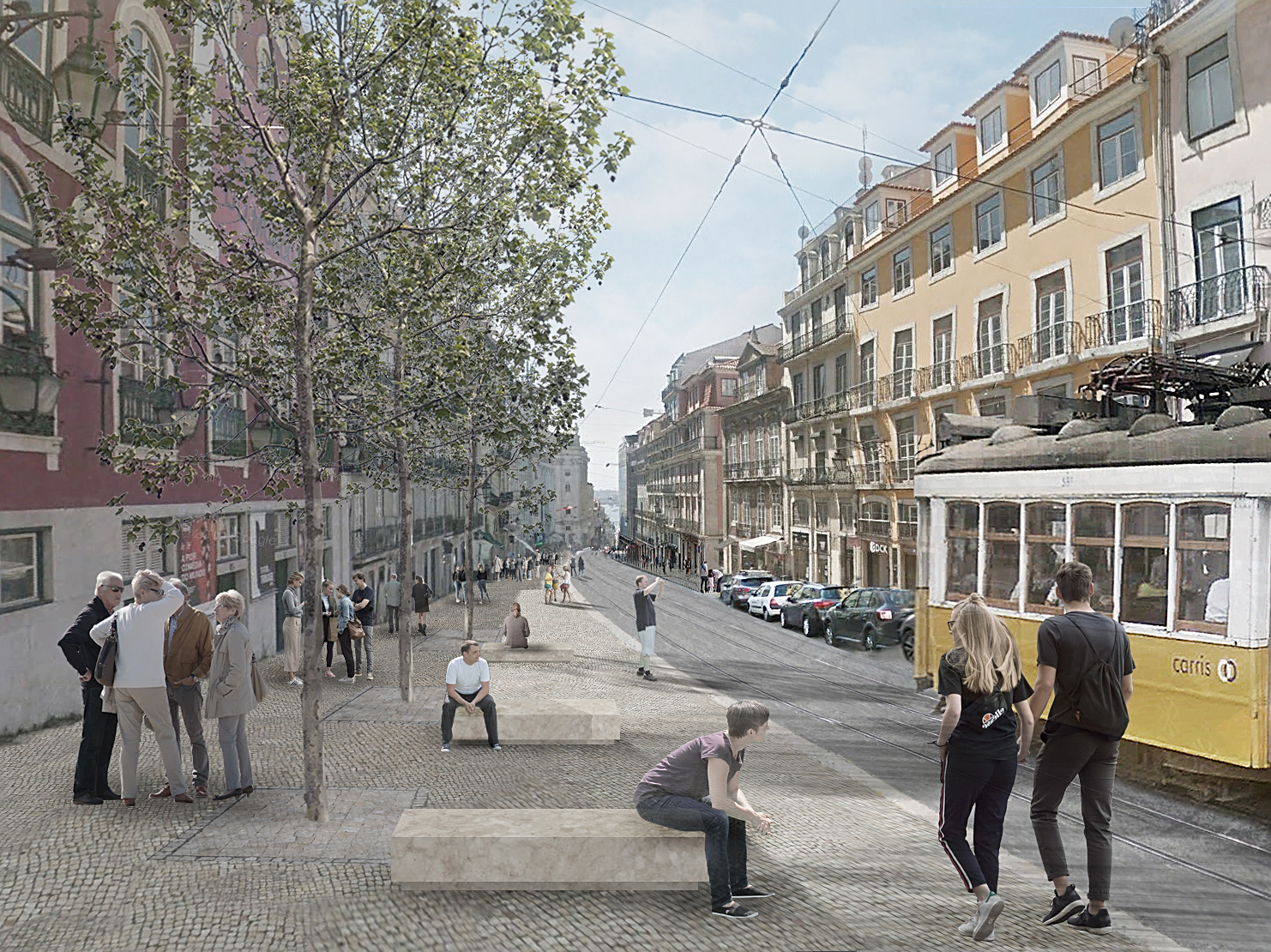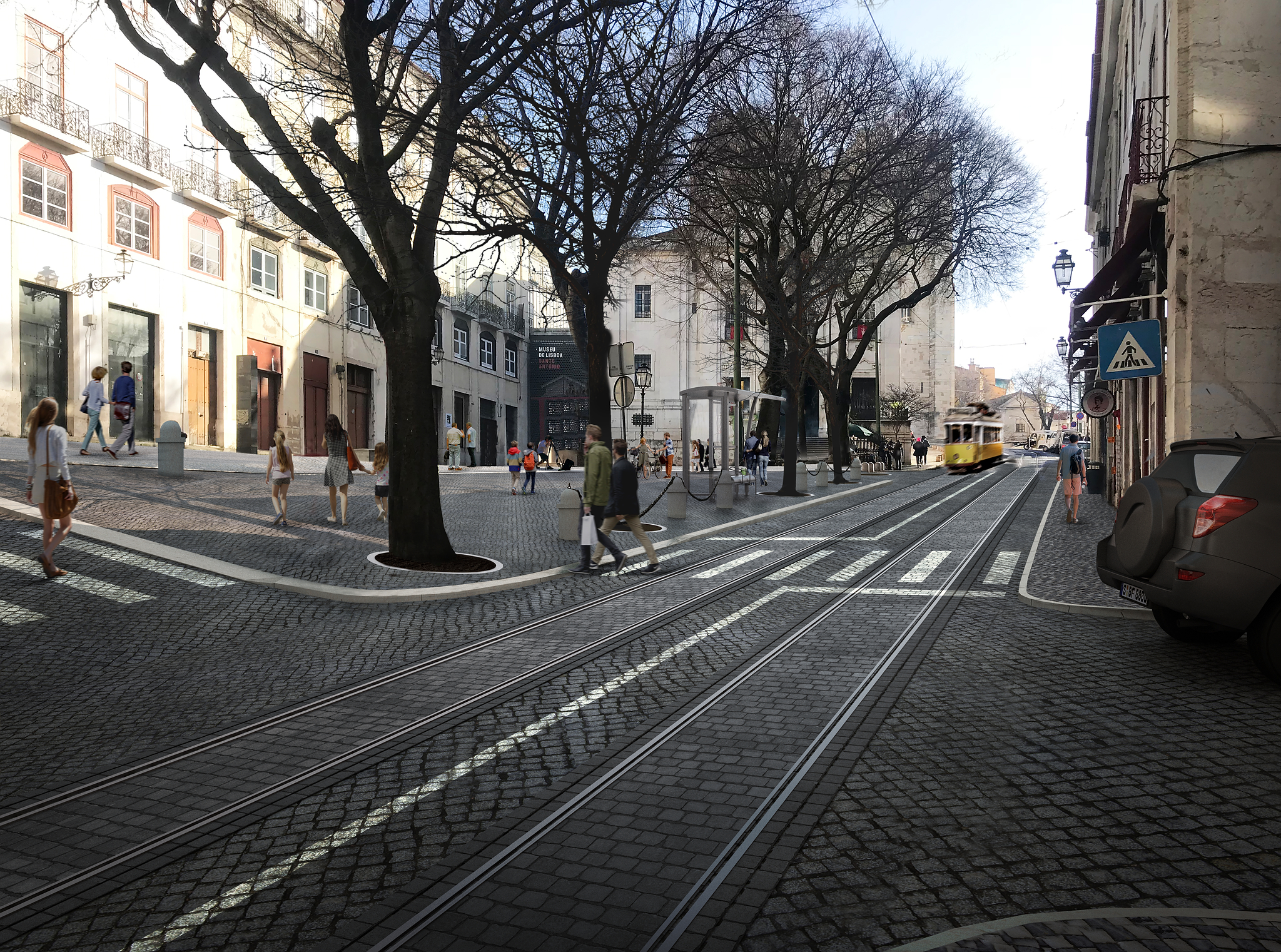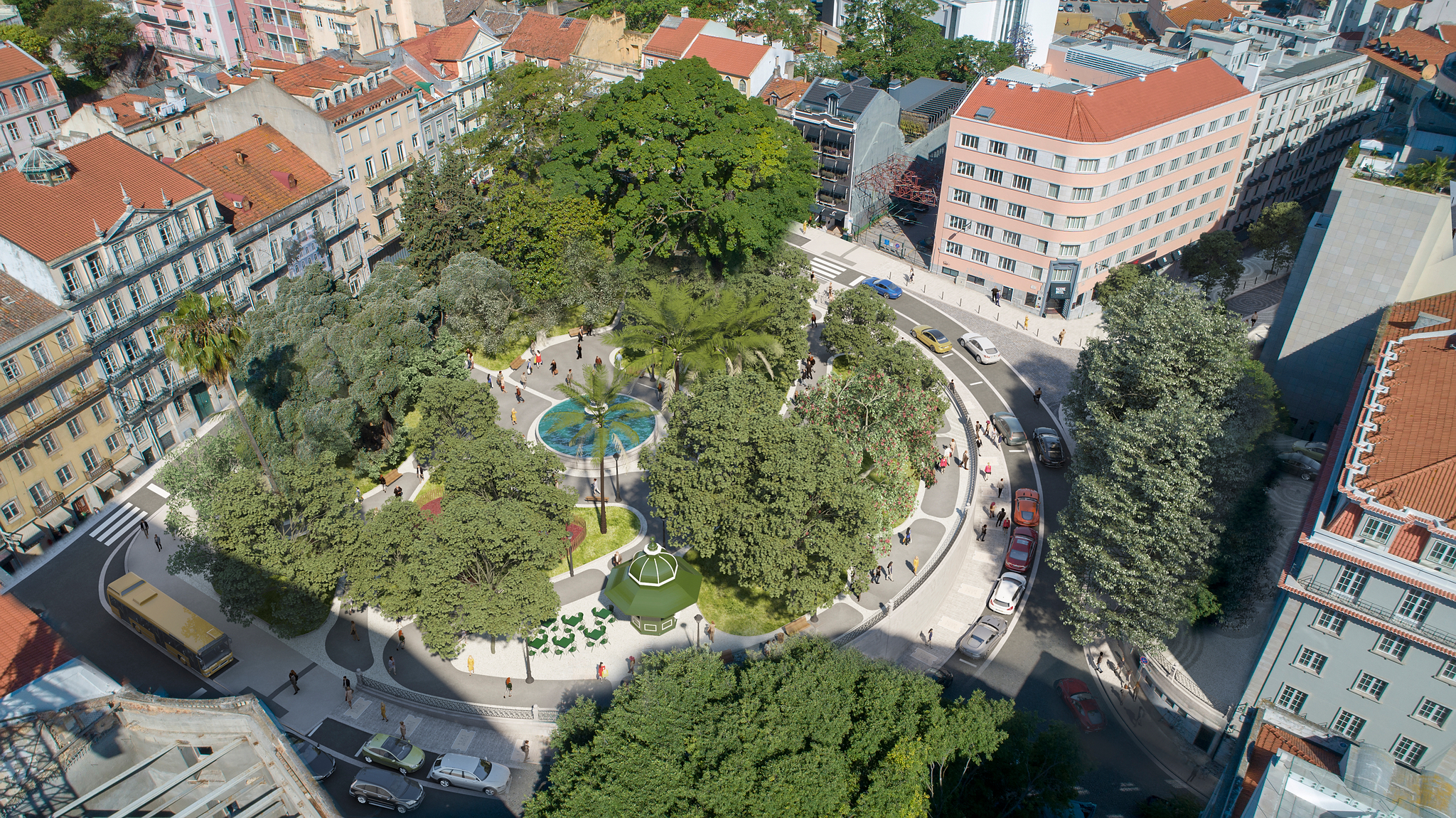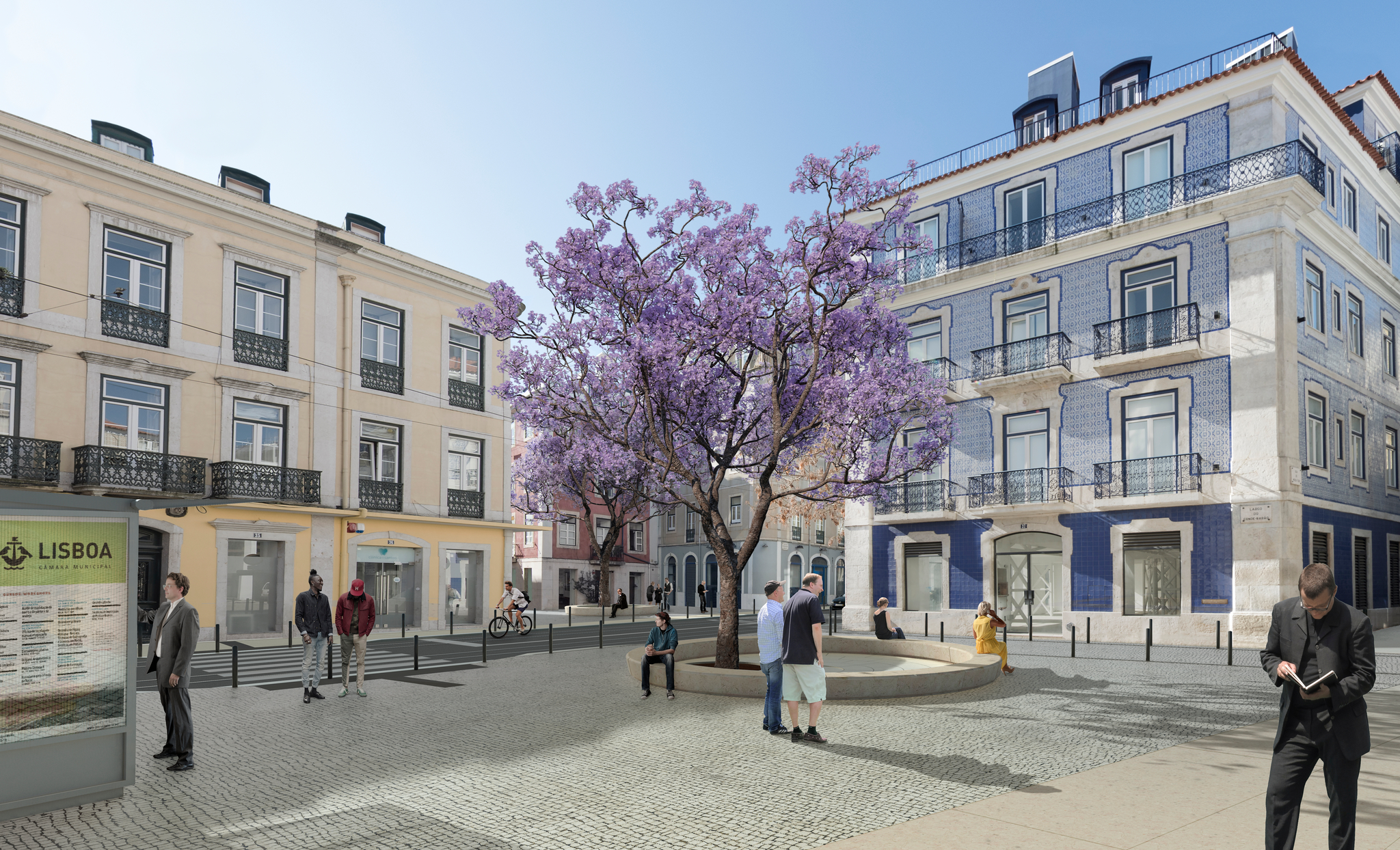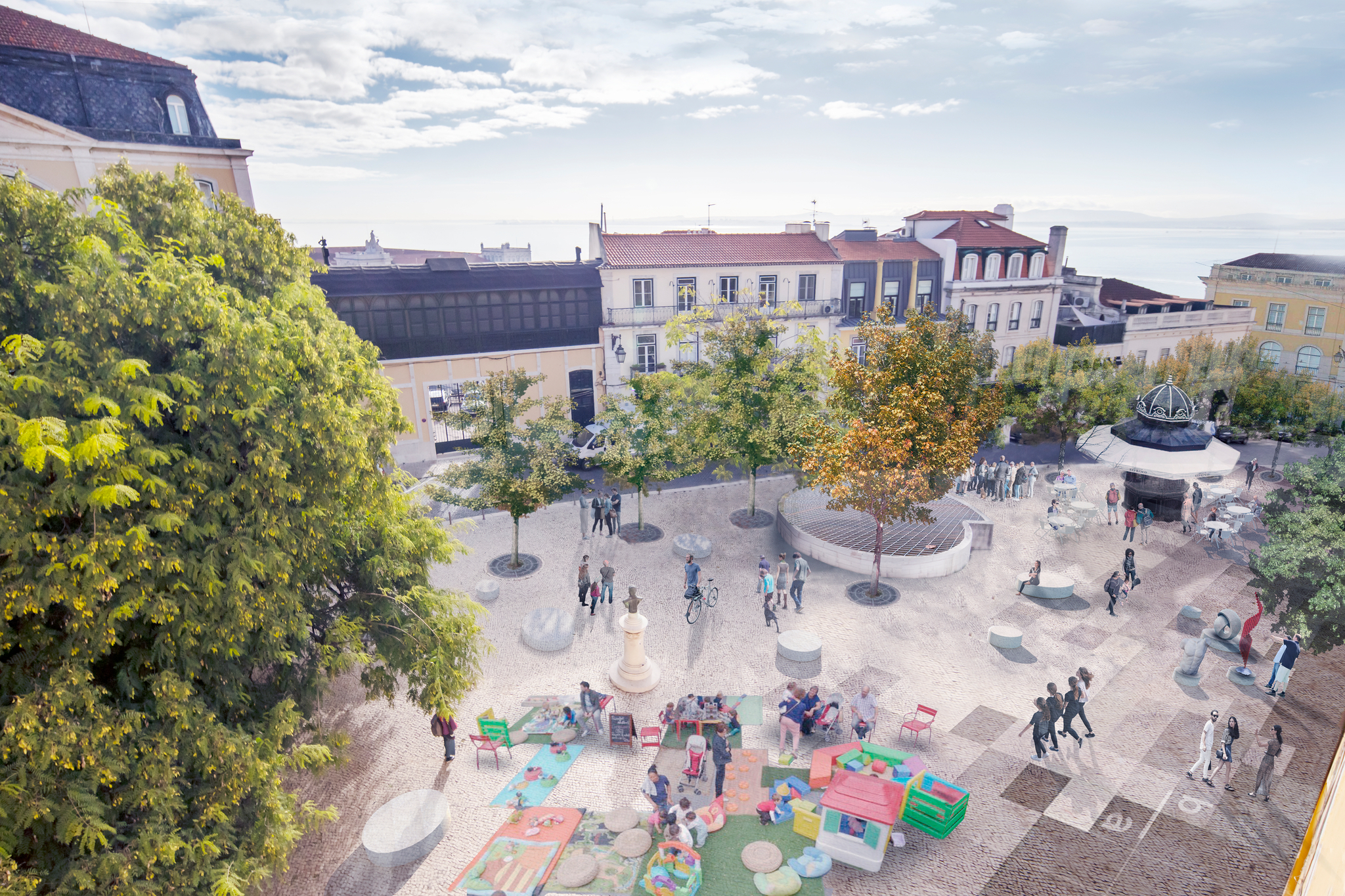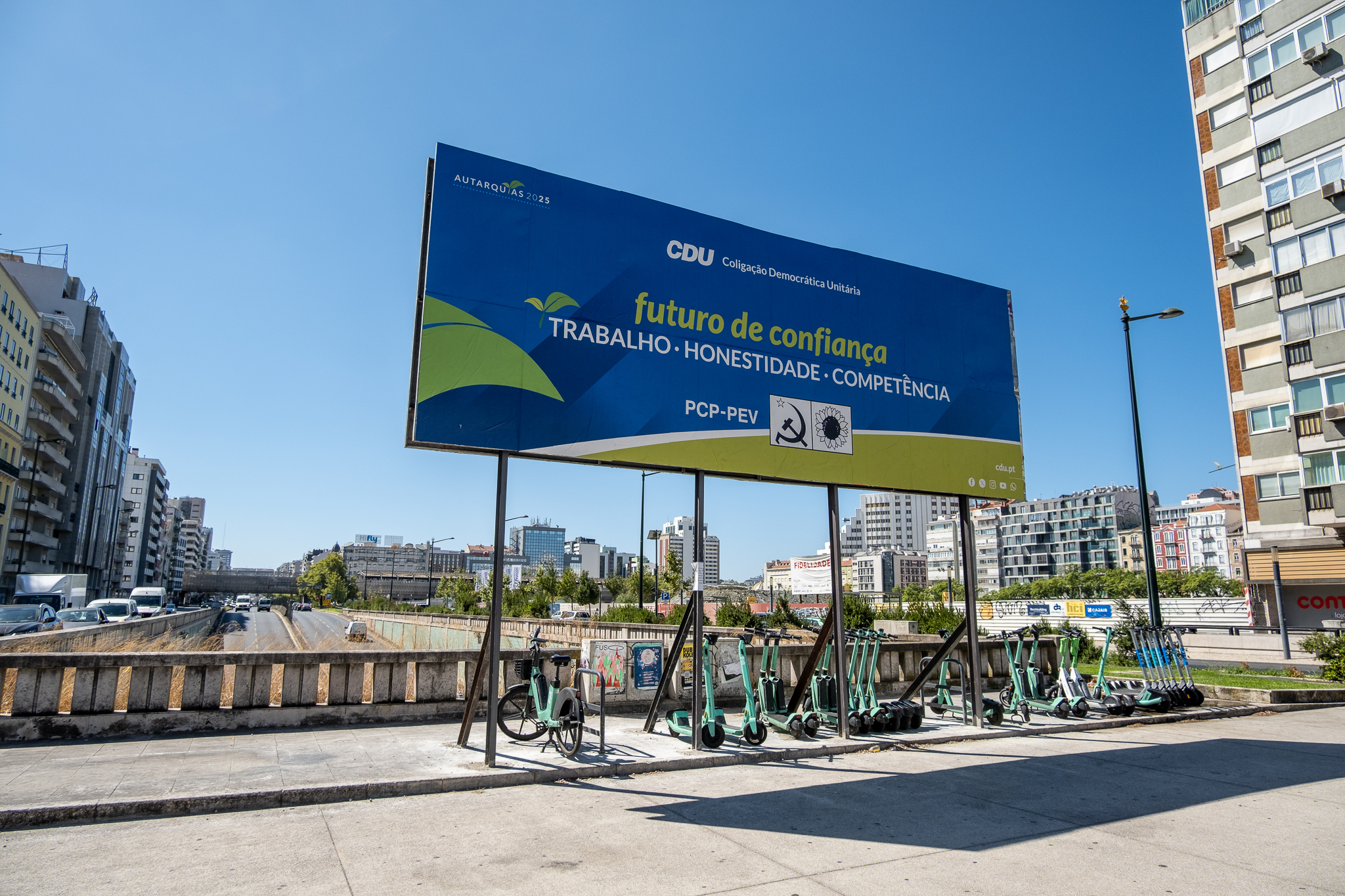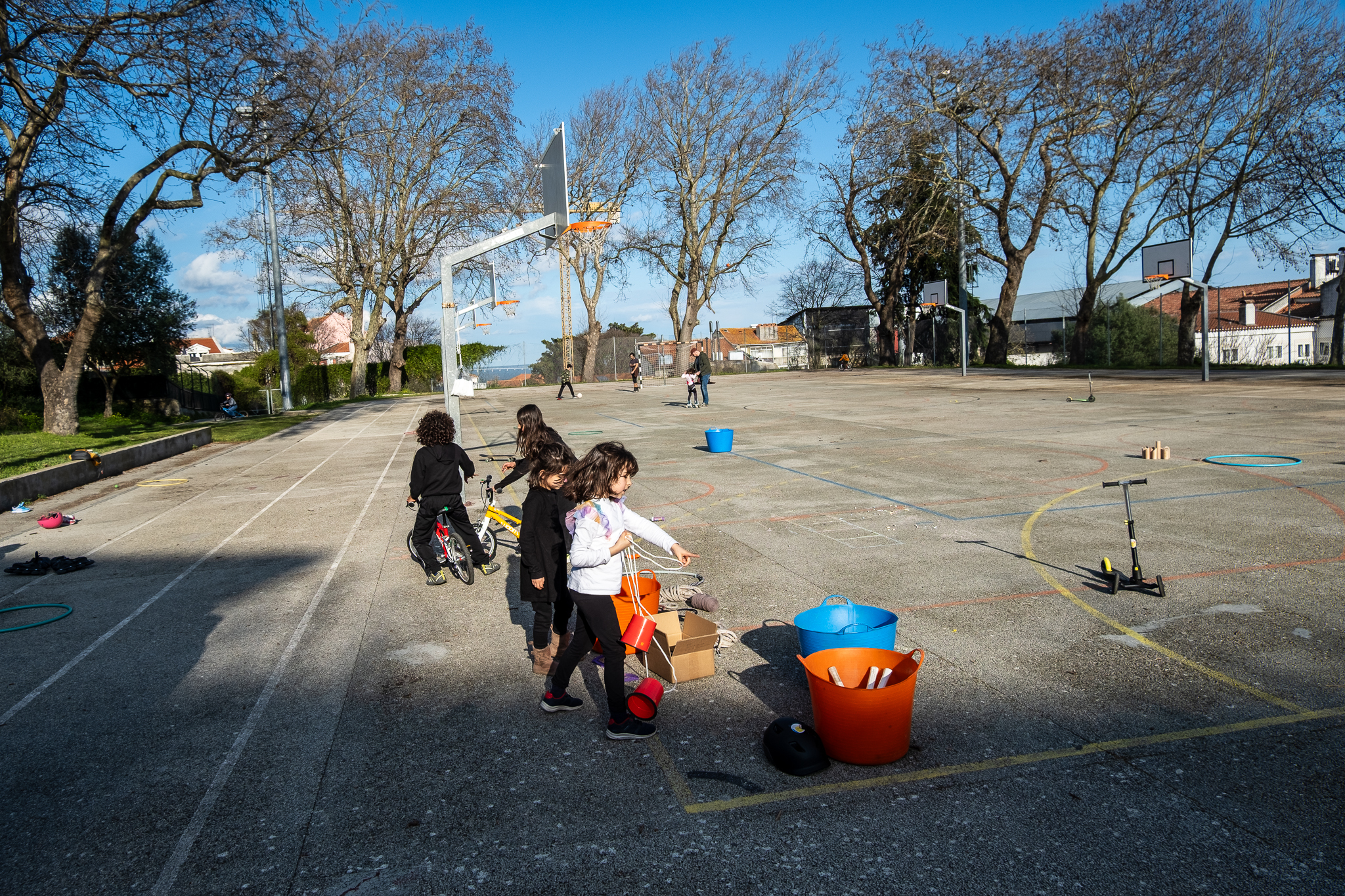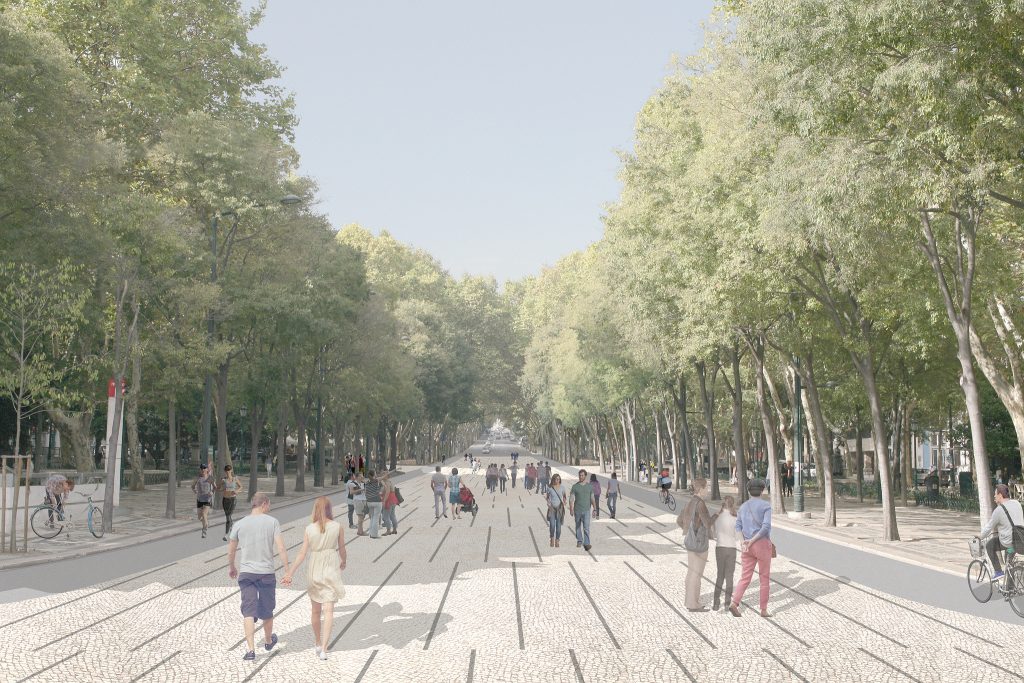
Menos 40 mil carros, menos estacionamento, menos 60 mil toneladas de CO2, mais 4,6 hectares pedonais, mais 5,7 km de ciclovias, autocarros do Marquês para a Baixa com frequências de 3 minutos, mais autocarros nocturnos.
Circulam diariamente na baixa de Lisboa cerca de 100 mil veículos por dia, número que a Câmara de Lisboa quer reduzir em 40%. O projecto é ambicioso e envolverá artérias críticas da cidade como as Avenidas da República e Almirante de Reis, mas também outras zonas na proximidade. Em Junho deste ano, vão começar a ser postas em prática as restrições de circulação. As obras de fundo nas ruas, avenidas e praças seguir-se-ão.
Há algumas excepções: carros eléctricos terão acesso livre, TVDEs (Uber, Bolt…) só se forem eléctricos, um máximo de 100 tuk-tuks poderá circular na baixa. Autocarros turísticos serão barrados. Os residentes vão ter direito a 10 convites/mês que poderão dar a visitantes. Todo o estacionamento em via pública na baixa vai passar a ser exclusivo para moradores; lojistas terão acesso a zonas de cargas e descargas; visitantes poderão usar os parques subterrâneos que existem na zona, como o recente do Campo das Cebolas.
Com a nova ZER Avenida-Baixa-Chiado, a Câmara Municipal de Lisboa estima reduzir 60 mil toneladas de CO2/ano, adicionar 4,6 hectares pedonais e criar mais 5,7 km de ciclovias. As Avenidas da Liberdade e Almirante de Reis serão intervencionadas. Na primeira, vão ser alargados os passeios, reduzido o número de estacionamentos (mas aumentado o número de lugares de rotatividade), criada uma via ciclável de cada lado, reorganizado o sentido do trânsito e recriado o “Passeio Público” entre a Praça da Alegria/Rua das Pretas e o Restauradores. Na segunda, a faixa descendente perderá uma via para ganhar uma ciclovia bidireccional.
O Chiado vai ser quase todo pedonal, incluindo o Largo do Chiado e o Largo Camões; a Rua da Prata passará a rua pedonal com uma via para eléctrico. Vão ser criadas zonas verdes na Rua Nova do Almada e na Rua Garrett com a ajuda de mobiliário urbano, vão ser intervencionadas áreas como a Rua dos Fanqueiros, o Largo das Belas Artes, a Rua de São Pedro de Alcântara, a Rua da Misericórdia ou o Largo do Chafariz para dar prioridade aos peões e transportes públicos. Apesar de já existirem imagens, os projectos de arquitectura ainda não estão concluídos. A ZER Avenida-Baixa-Chiado coexistirá com as chamadas Zonas de Acesso Automóvel Condicionado (ZAAC), já existentes no Bairro Alto, na Bica ou no Castelo.
Na apresentação da ZER Avenida-Baixa-Chiado, que decorreu esta sexta-feira, 31 de Janeiro, o Presidente da Câmara, Fernando Medina, referiu que “os modelos internacionais são bons para inspiração mas são maus para cópia”, acrescentando que Lisboa adoptou um modelo ajustado à sua cidade e reforçando que um dos objectivos passa por criar mais vida, comércio e trabalho na zona da baixa. Cidades como Londres, Madrid, Oslo, Barcelona e Paris têm apresentado medidas para tirar carros das zonas centrais, seja através da taxação dos acessos ou pela conversão das ruas em espaço pedonal.
Medina referiu os compromissos que Lisboa assumiu de reduzir em 60% as emissões de CO2 até 2030 e de alcançar a neutralidade carbónica até 2050. O Presidente da Câmara Municipal de Lisboa, que disputará eleições em 2021, lembrou ainda que a má qualidade do ar causa a morte prematura de quase 6 mil pessoas em Portugal, segundo a Agência Europeia do Ambiente, sendo um perigo acrescido para grupos mais frágeis como crianças e idosos.
O transporte público na baixa vai ser reforçado com autocarros do Marquês com frequências de 3 minutos e uma melhor rede nocturna, que permita ligações à periferia, como Odivelas, Amadora, Oeiras e Loures. Fernando Medina lembrou outras medidas que estão em curso e que permitirão dar motivos para largar o automóvel, como a descida do preço dos passes de transporte público e a restruturação da Carris, que permitirá criar uma Carris que opere em toda a área metropolitana de Lisboa.
De fora da nova ZER ficará, pelo menos para já, a Ribeira das Naus, que, à beira do rio, continuará a ser uma área de atravessamento de milhares de veículos por dia. A ZER Avenida-Baixa-Chiado será posta em prática em Junho com a fiscalização a ser mais apertada a partir de Julho. Até lá, serão feitas reuniões com moradores, comerciantes e as Juntas de Freguesia, o registo dos veículos autorizados e ultimados os projectos de intervenção nas ruas, avenidas e praças abrangidas pelas mudanças.
A nova baixa de Lisboa é um projecto histórico, e deverá também ser uma das bandeiras de Medina na sua possível recandidatura em 2021, juntamente com obras como a nova Praça de Espanha. Ambas as iniciativas enquadram-se na Capital Verde Europeia 2020, galardão atribuído a Lisboa.
